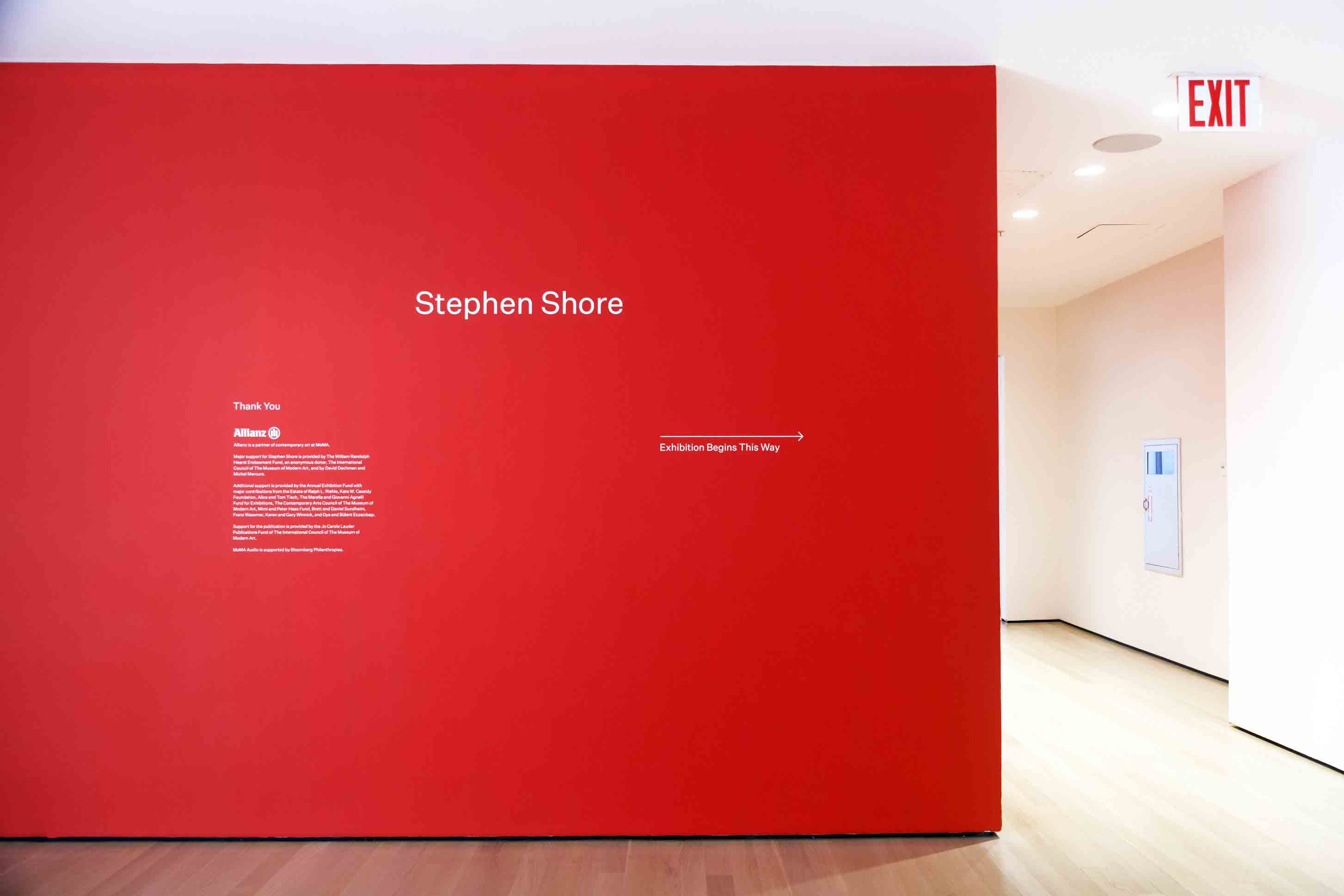
Stephen Shore has been my favorite living photographer since I took my first photograph. Currently, he is the subject of a major retrospective at the Museum of Modern Art that features his work over the last five decades, from the prints he made as a teenager to his current Instagram photography. Shore rose to popularity in the 1970s as he pioneered the use of color in art photography, capturing the mundanity of Middle America. Organized by the MoMA’s curator of photography, Quentin Bajac,“Stephen Shore” is the first exhibition in New York City to include his entire body of work.
Your two most famous series, American Series and Uncommon Places, feature scenes from Middle America. Although I initially assumed that you were familiar with the places you photographed, I soon found out that you actually grew up in New York City. How do you think your experience as an outsider shaped the manner in which you chose to capture those areas of the United States?
I saw myself as an explorer. In fact, one year I went to the leading safari outfitter in New York and purchased a safari jacket and pants to wear on my trip. Several of the most famous road trips were made by outsiders: Cartier-Bresson traveled around the States in the late 40s; Robert Frank was Swiss; Nabokov, a Russian, has a wonderful description of the year-long, fictional road trip Humbert took Lolita on in Lolita; and even, in a way, Jack Kerouac was an outsider – although he grew up in Massachusetts, his family was French-Canadian and he only spoke French until he was six.
Although many of your photographs are of landscapes, some works are portraits of repeated individuals, such as those of your wife, Ginger, and your mother and father. Do you see any connection between these works and your landscapes?
I would refer you to American Surfaces. In it you’ll see a mixture of architecture, food, portraits, artwork, etc., etc. In the 80s, I concentrated on landscape. More recently, my Ukraine work was centered around portraits.
The end of your MoMA retrospective focuses on your Instagram photography. How do you think the immediacy of Instagram has changed the way in which people view photographs?
People use Instagram with many different aims. So it’s hard to generalize. One thing that has struck me is the number of images I see that are self-aware: holding objects in one’s hand, looking at the ground with one foot in the picture, etc. They imply a person seeing themselves seeing. I also believe that posting on Instagram has led some people to think about making photographs as they go through the day. People who are not photographers have begun to digest the world photographically.
Considering that you have taught at Bard for so many years, would you ever consider either teaching or guest lecturing at Yale?
I’ve given presentations at Yale several times in the past. As for teaching, I’m very happy with my situation at Bard. Also, I like teaching undergraduates. When I first got my job at Bard in 1982, I had a conversation with Garry Winogrand, who was planning on moving from LA to the Hudson Valley after the 1984 Olympics in Los Angeles. (Unfortunately he died before he could move). I asked him if he wanted to teach at Bard. He told me that he would, but with one condition, that he only teach beginning photography, because he viewed it as the most important class.
Rebecca Finley | rebecca.finley@yale.edu







